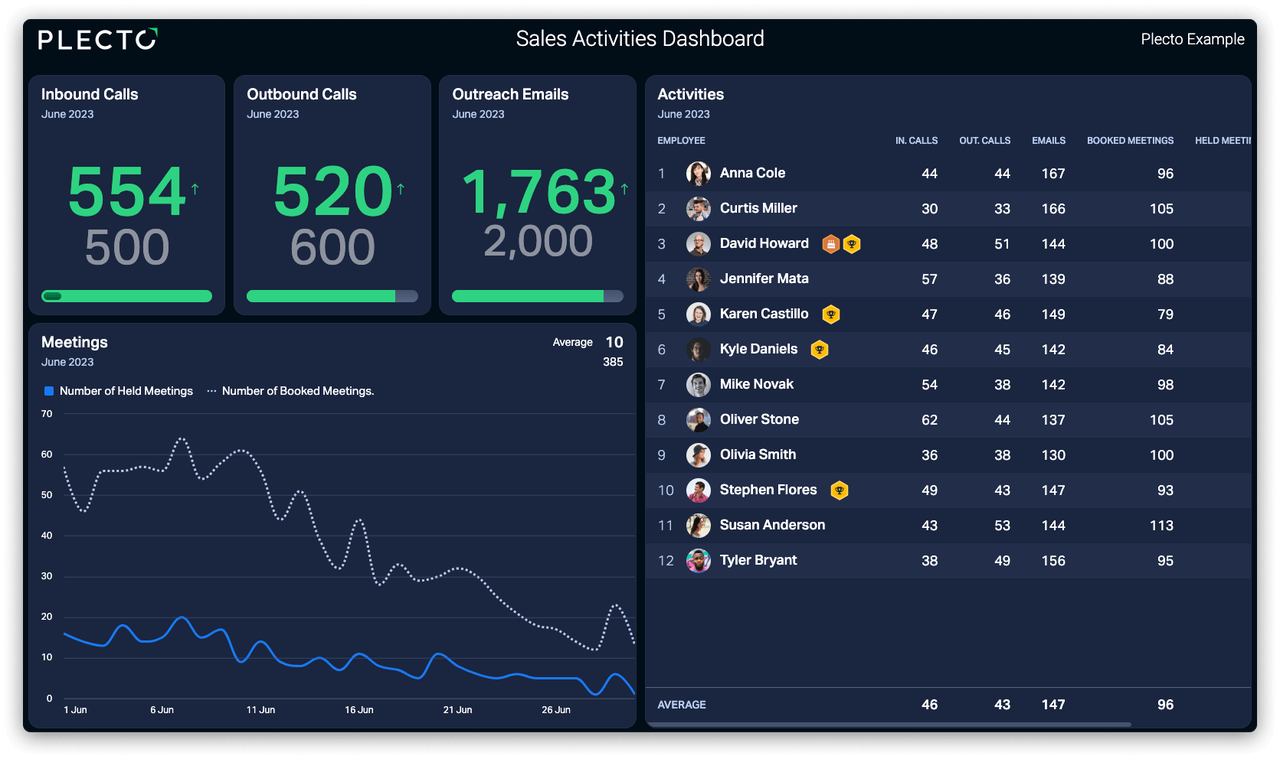What is a sales activities dashboard?
Every day, the sales team has numerous amount of tasks, from making cold calls, to closing deals and so much more. There’s a lot to be done, and often one of the toughest tasks can be figuring out what to prioritize.
This is where the sales activities dashboard comes in handy. A sales activities dashboard measures the day-to-day activities of the sales team, often including metrics such as the number of calls made, emails sent and more. Its main purpose is to boost productivity in your office and enable sales reps to prioritize their workload.
Just click below to see a real-time sales activities dashboard in action. ⬇️
